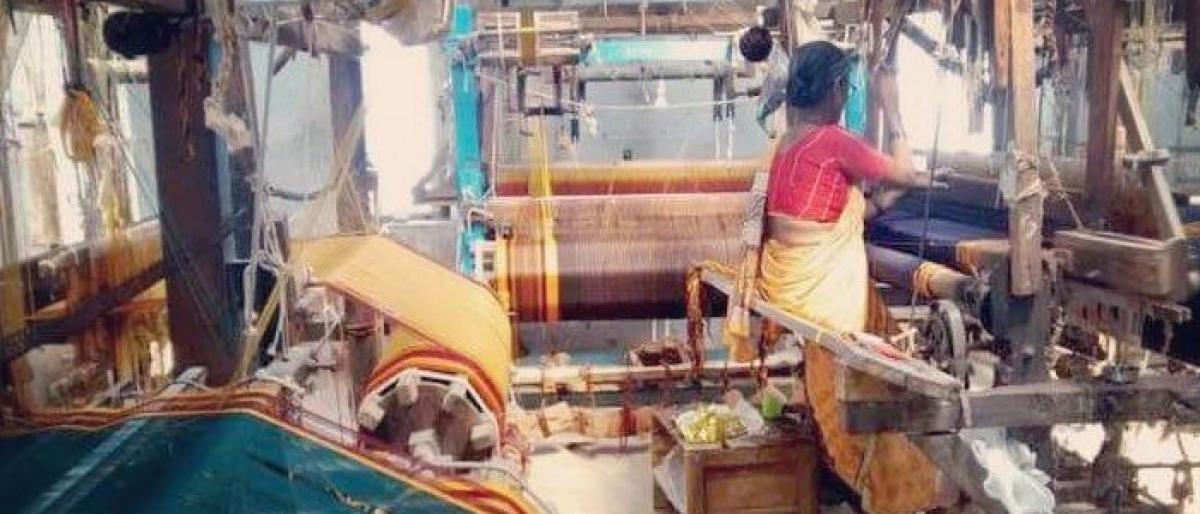Live
- Man Sets Himself on Fire Near Rail Bhawan in New Delhi, Investigation Ongoing
- From Pushpa 2 to Devara: The Year in Telugu Cinema
- Balachandar Ramalingam on revolutionizing manufacturing with AI-driven component management
- Srikanth Avancha speaks on leadership, innovation, and risk management in IT services
- Munirathna Attacked in Bengaluru
- Centre Revives Coffee Development Plan to Aid Farmers- Goyal
- Sensational Crime Incidents in Andhra Pradesh and Telangana: 2024 Year in Review
- Tragic Loss for Beejady Village: Lance Havaldar Anoop Poojary Among Five Soldiers Killed in Poonch Accident
- Mass Rally Organized by BJP in Hyderabad on Atal Bihari Vajpayee's Centenary Celebration
- J&K: With over 25,000 houses built under PMAY, Doda ranks second in Jammu region
Just In

Marathas under the leadership of Maharaja Chhatrapati Shivaji were expanding their boundaries In the runup to his expedition, Shivaji appealed to a sense of Deccani patriotism, that Southern India was a homeland and that it should be protected from outsiders His appeal was somewhat successful, and in 1677 Shivaji visited Hyderabad for a month and entered into a treaty with the Qutb Shah of the
Marathas under the leadership of Maharaja Chhatrapati Shivaji were expanding their boundaries. In the run-up to his expedition, Shivaji appealed to a sense of Deccani patriotism, that Southern India was a homeland and that it should be protected from outsiders. His appeal was somewhat successful, and in 1677 Shivaji visited Hyderabad for a month and entered into a treaty with the Qutb Shah of the Golconda sultanate, agreeing to reject his alliance with Bijapur and jointly oppose the Mughals. During this period, he camped, a few times at Narayanpet, a small town in Mahabubnagar District in Telangana.
According to the legend, a part of his army was tired of fighting battles and wars and thus decided to stay back in Narayanpet. These people were the ones who took care of administration, were warriors as well as people who would cook for the army and had known the weaving skill and were expert in trade.
All these communities together started the weaving business in Narayanpet. While some invested in the business, and some started weaving, the rest took the role of master weavers to bring trade. That’s how the weaving culture started in Narayanpet. These weavers started producing silk sarees with a distinct style of design, which came to be known across the country as Narayanpet Silk sarees. No surprise here, courtesy the people, who migrated from the Maratha region to Narayanpet, there is a lot of Maharashtrian influence seen in Narayanpet Silk sarees.
The folks, who settled down in the Narayanpet region in the 17th century are the pioneers of this art. The skill has been passed down through generations. The entire weaver community involved in this art was located in Narayanpet and eventually spread to nearby places. The sarees are made from fine silk or cotton and have a thread count of at least eighty. There are eight yarns used in weaving the saree at the borders, which help in strengthening the fabric. Under the influence of Lokapalli Sansathan, the production of Narayanpet Silk and Cotton sarees increased dramatically.
Before the big boom of power looms in Rabkavi banahatti, Narayanpet was filled with thousands of handlooms, over time handlooms started to disappear and today there are less than 400 handlooms surviving in and around Narayanpet.
Omprakash, a master weaver in Narayanpet says “Weaving business was good until the late 90’s, later weavers started migrating to other jobs, because of poor wages in weaving. Today, there is a need for a revival of this traditional craft. A small attempt is being made for reviving this craft at Narayanpet Khadi Gramudyog.”
Narayanpet sarees got their Geographical Indicator (GI) registration in 2013 with the government of India. The GI status recognises the valuable contribution made by these weavers in keeping alive a cultural heritage of Narayanpet and was a temporary relief to the beleaguered weavers of Narayanpet, who were struggling to compare against the cheaper fabrics manufactured by the commercial power looms also taking on the name of Narayanpet and depriving them of their rightful due.
The Narayanpet saree was once regarded as the garment of the Gods, these traditionally handmade sarees show the charming influence of two states of Maharashtra and Telangana. Once a part of the royal patronage of the Marathas, Narayanpet sarees are still helping the contemporary Indian women in keeping their Saree game strong.
A lot of people have now moved to Hyderabad, Mumbai and abroad either for studies or on a job. They have chosen different occupations like a doctor, an engineer, fashion designer, a coder, businessman, an entrepreneur among others.
Vijaylakshmi, a college faculty says, “Younger generation of our community have mostly migrated to Hyderabad and abroad for studies or jobs. The older generation is still into weaving business and teaching. We celebrate and come together for the Jiveshwar Jayanti that brings together the Marathi weaving community.”
Marathi Community in Narayanpet claim their descent from the Jivheshwara and Bhagavan Jivheshwar is worshipped by this community. The name Jivheshwar comes from Jivha (tongue) and Ishvara (god), which means the one who is born out of the tongue. The popular belief is that Bhagavan Jivheshwar manifested from the tongue of Shiva. Bhagavan Jivheshwar Jayanti is the birth anniversary of their spiritual mentor and the day is celebrated with great enthusiasm by organising a lunch for the needy and also honour individuals with awards for their achievements. Overtime Maharashtrians started following Telugu rituals in addition to their native and you will today see a mixed culture and flavour of two States in harmony.
Deepika Sarode

© 2024 Hyderabad Media House Limited/The Hans India. All rights reserved. Powered by hocalwire.com







